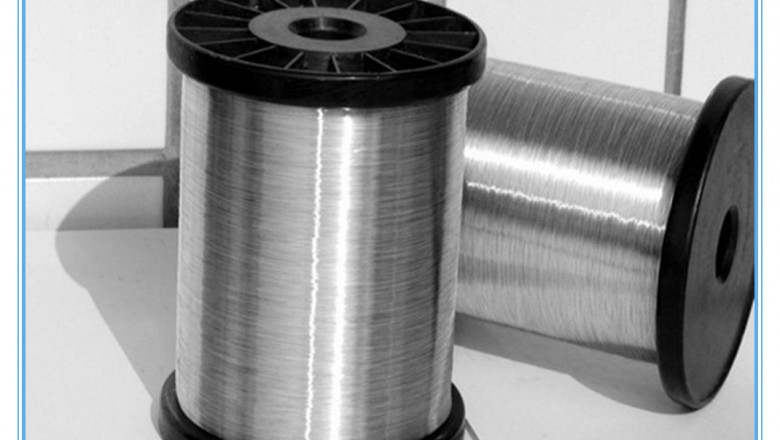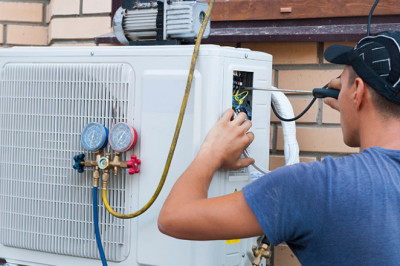views

Many welders who have not tried to weld titanium or who have not had any welding experience with titanium feel that Titanium Welding Wire is difficult. However, welders who regularly weld titanium in their fabrication facility claim that the process is remarkably comparable to that of welding stainless steel and nickel alloys. Of course, you need to exercise caution and adhere to standard practices.
This article addresses welding-related topics such as how to weld titanium, welding procedures for welding titanium, filler wire for welding titanium, and welding-related queries like whether titanium can be MIG or stick welder, whether it can be welded with mild steel, and whether it can be welded with aluminum.
How to Weld Titanium?
Due to its low density and excellent strength-to-weight ratio, titanium is widely used. Today, it is employed in a wide range of businesses, including those that produce goods for the military, the marine industry, and aerospace. Additionally, nuclear reactors employ it.
Titanium is a very reactive metal (it starts to react at about 700 oF), and when heated, it can react with various air constituents to generate oxides, nitrides, and brittle carbides on its surface. When welded, each of these substances alters the heat-affected zone (HAZ) and diminishes the benefits of titanium.
Titanium creates an exterior layer of titanium oxide at ambient temperature when exposed to atmospheric air. Since titanium oxide has a much greater melting point than titanium, it needs to be removed before welding. When welding titanium, it's important to keep ambient air and other pollutants away from the molten weld pool and the hot metal behind it.
While stainless steel's melting temperature is 1510o C (2750o F), titanium's melting point is 1668o C (3034o F). As a result, melting titanium can rapidly become oxidized (if allowed to come into contact with air) and polluted during welding. In order to prevent titanium during welding from becoming contaminated, multiple layers of shielding are required.
Titanium welding preparation for the weld
- Keep the area where you are welding titanium clean and clear of anything that could contaminate the titanium.
- Apply a special stainless steel brush to the titanium workpieces to remove the oxide covering. To get rid of impurities like oil, grease, dirt, and other materials, clean the titanium workpiece surfaces. To do this, you can use a degreasing solution or a moderate solution of sodium hydroxide. Before you begin welding, clean and dry the welding surfaces.
- Avoid letting titanium dust build-up when grinding titanium (to remove the oxide covering). Due to the metal's strong reactivity, titanium dust has the potential to catch fire.
- When welding titanium, use a special stainless steel brush, a carbide file, a carbide deburring tool (such as a carbide rotary burr), and other tools (to avoid contamination of welding).
- It is crucial to modify the welding torch so that a trailing shielding gas is added. The welding torch is followed by the trailing shield.
- The argon gas should be transported from the cylinder to the shielding using a nonporous, spotless plastic hose. Please refrain from using a rubber hose because it may be porous and absorb oxygen as it travels.
- The titanium filler wire and any handling equipment should be cleaned and dried.
- Use a hot air dryer to dry the workpiece's surface if it has any moisture when the titanium fabrication is important, and always wear dry gloves.
- When welding titanium, gloves must be used since the chlorine in perspiring hands can lead to localized corrosion.
- When welding titanium, argon must surround the whole welding length to prevent oxides from absorbing, contaminating, and weakening the weld.
How to assess the quality of titanium welding?
The quality of the titanium weld can be determined by the color of the weld. A silver and brilliant weld bead is typically a sign of a high-quality titanium weld. For some applications, weld beads in the colors of light straw (light yellow), dark straw (dark yellow), and brown may be appropriate. These weld beads can be utilized after being carefully cleaned with a special stainless steel brush. The creation of the oxide is what gives the color.
Uses for Titanium Wire
- At the moment, more than 80% of titanium and titanium alloy wires are utilized as welding wires, including for the welding of receivers, pipes, turbine discs, blade repairs, and various titanium equipment.
- The chemical, pharmaceutical, and paper industries have made extensive use of titanium wire due to the material's remarkable resistance to corrosion. It can be transformed into a mesh for chemical drug filters, seawater filters, and filters for pure water.
- Due to their strong overall performance, titanium and titanium alloy wires are also utilized to make fasteners, load-bearing components, springs, etc.
- Titanium and titanium alloy wires are used to make medical devices such as dental crown fixation and skull fixation that are implanted in people because of their exceptional biocompatibility.
- Satellite antennae, clothing shoulder pads, women's bras, and eyeglass frames are all made with titanium alloy wires having shape memory properties, such as titanium-nickel alloy wires.
- Titanium and titanium alloy wires are used to make various electrodes in the electroplating and water treatment sectors.












